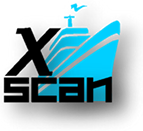Work Packages
The X-Scan project is industry driven and TWI is leading the project because of its experience, both technically and in project management. The consortium has the responsibility for the success of the project and has therefore organised the work activities into a number of discrete Work Packages. The project is divided into a data acquisition and design phase and the implementation phase. Each work package (WP) will be led by the listed partner, and TWI is responsible to maintain an overview and to ensure that the WP administration and the milestones are achieved.
WP1. Specification & Defective Samples
A specification document will be generated, detailing all the aspects of the project. This document will be used to guide the overall work packages. At the same time test samples will be designed, procured / manufactured for the development and the testing the three sub-systems.
WP2. NDT Techniques, Sensors & Systems
The objective of this WP is to research and develop advanced NDT techniques to inspect the welds required by the end users. The RTDs will develop techniques for PAUT, ACFM and laser seam tracking to fulfil the SMEs requirements. These will be optimised for various weld configurations in thin plates.
WP3. Development of the Manipulator
The prototype manipulator will be designed and manufactured to deliver the NDT sensors and systems to the appropriate point of the weld for the inspection. The laser tracking/guidance sub-system will be used to guide the manipulator.
WP4. Integration and Validation
It is of particular importance to the SMEs and end-users that the NDT techniques developed in the program are acceptable to the classification societies. To do this the completed system will be tested on the sample pieces created in WP1, along with any other samples submitted by the end-users. The results of this will be compared to the end-users currently accepted techniques to assure effectiveness. The SMEs will oversee the validation work.
WP5. Demonstration
It is of particular importance to the SMEs and the RTDs to first demonstrate the final system capabilities to the project end-user and latter to the industry.
WP6. Training
The knowledge generated in the project will be significant, and must be absorbed by the SMEs. The aim of this WP is to ensure that the SMEs have a good understanding of the NDT techniques generated in the project (D6.1). It will also be to the benefit of the SME to ensure that the end-users have a good understanding of the new techniques generated by the project, so they might understand what can be achieved as a result of the project. The demonstration of the X-Scan (D6.2) unit to a selected audience will also helped with the exploitation of the project results by generating interest from the industry.
WP7. Exploitation & Dissemination
The dissemination will be managed through WP7 and will focus on dissemination across other industry sectors and developing supply chains. Traditional routes such as publications, conferences, and workshops will be used, for the material generated in the project deemed suitable for wider dissemination. A pilot training course will also be developed and given to staff of Spectrumlabs and Tecnitest for the purpose of implementing the equipment on site.
WP8. Project & Coordination Management
The overall project will be monitored and controlled in a management task in WP9 to ensure deliverables and reports are produced in time and within budget.






